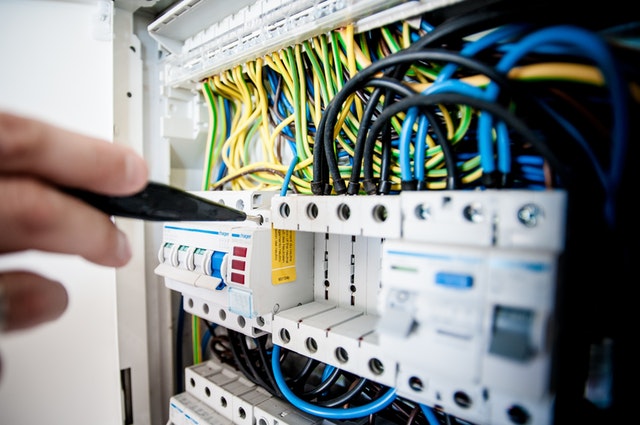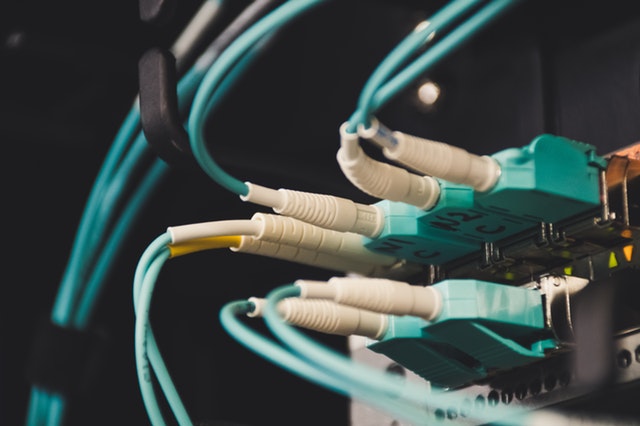Fiber optic cables carry data between two places utilizing an entirely light-based (optical) technology. To transmit data, the cable permits traveling of light which repeatedly bouncing off the walls through a process called total internal reflection.
The cladding and core bend incoming light at a specific angle via their refractive index. They also reflect light through a sequence of bounces known as modes.
Fiber optic cable or optical fiber cable, it’s a kind of ethernet cable which comprises a few or many optic fibers. Since they’re designed to relay light pulses, fiber optic cable supports high-speed data transmission and long-distance telecommunication.
Ordinarily, fiber optic cable can transmit data at a speed of 10 Gbps, 40 Gbps or up to 100 Gbps. Thus, this technology is broadly used in the globe’s internet, telephone systems, and cable television. Particles of light (tiny photon) bounce down the cable to the end.
However, the beam of light doesn’t leak out from the edges. Following are two factors that keep light inside the cable.
1# Total internal reflection – If light hits the glass at shallow angles of less than 42 degrees, it reflects the same with the mirror.
2# Structure of the cable – Fiber optic cable is made of two separate parts: core and cladding. The middle and the main part is called core, and it’s the component via which light travels. Wrapped around the outer part is a glass layer called cladding.
The job of cladding is to retain light signals inside the core. Cladding has a lower refractive index and is composed of different forms of glass since the cable has different types of uses.
Types of fiber optic cables
Different forms of communication signals need different types of fiber for effective transmission. There are two types of fiber optic cables: single-mode and multimode fibers.
1# Single-mode fiber – It’s the most common in global telecommunications systems. The design of the cable is to relay light energy on a single path, across long distances. The core is miniscule only bearing 8 microns in diameter.
It’s most applied for long-haul networks. And since it comprises one light path, there are fewer chances of distortion and overlapping signals.
2# Multimode fiber – The cable has a bigger core and a diameter of up to 62.5 microns. It’s built to carry light signals to various paths simultaneously and usually covers a distance less than a mile.
Some connected-home networks and data centers, for instance, prefer multimode fiber since it handles a vast amount of data in a space- and cost-efficient manner.
The technology in fiber optic cable utilizes the following items and processes to get data across the world.
- highly purified glass
- laser
- reflection
- refraction

The core is composed of highly purified glass, for instance, silicon dioxide. The surrounding (cladding) is made of infused or “doped” glass, which consists of tiny elements such as boron and germanium. Doping the cladding minimizes its refraction index.
The shroud and plastic coating are made from sturdy fibers, for example, Kevlar or metal that holds it together. Then, the outer protective coating keeps the external environment, such as dirt or water, from messing the cable.
Transmitting beam of light
Perhaps you envision on how fiber optic cable transmits phone calls and videos. Light exists in two major forms – on and off while the digital language in computers entails 1 and 0. The rapid blocking and unblocking of the light beam is translated as data packets making a sequence of 0s (on) and 1s (off).
Laser light enters from one end of the fiber cable and strikes the glass surface at a greater angle than the critical angle. The glass surface experiences total internal reflection; hence, the light can’t escape until it reaches its final destination.
Fiber technology can use infra-red or visible light since they’ve got the 2 below qualities.
- Can travel long distances via glass
- Small amounts are lost or absorbed
The plastic coating averts scratches on the glass surface. Hence, there’s no light lost from inside the fiber. Transmission systems send information through the fiber by changing electronic signals into light.
Transmission limitations
Fiber cable technology experiences the following 3 transmission limitations.
- Transmission limited by dispersion and attenuation
- Multimode fibers can encounter multimode dispersion and chromatic dispersion. Delayed rays lead to pulse spreading while individual wavelengths may travel in varying speeds respectively.
- Dispersion forms an inherent operational limit referred to as bandwidth-distance product (BDP)


